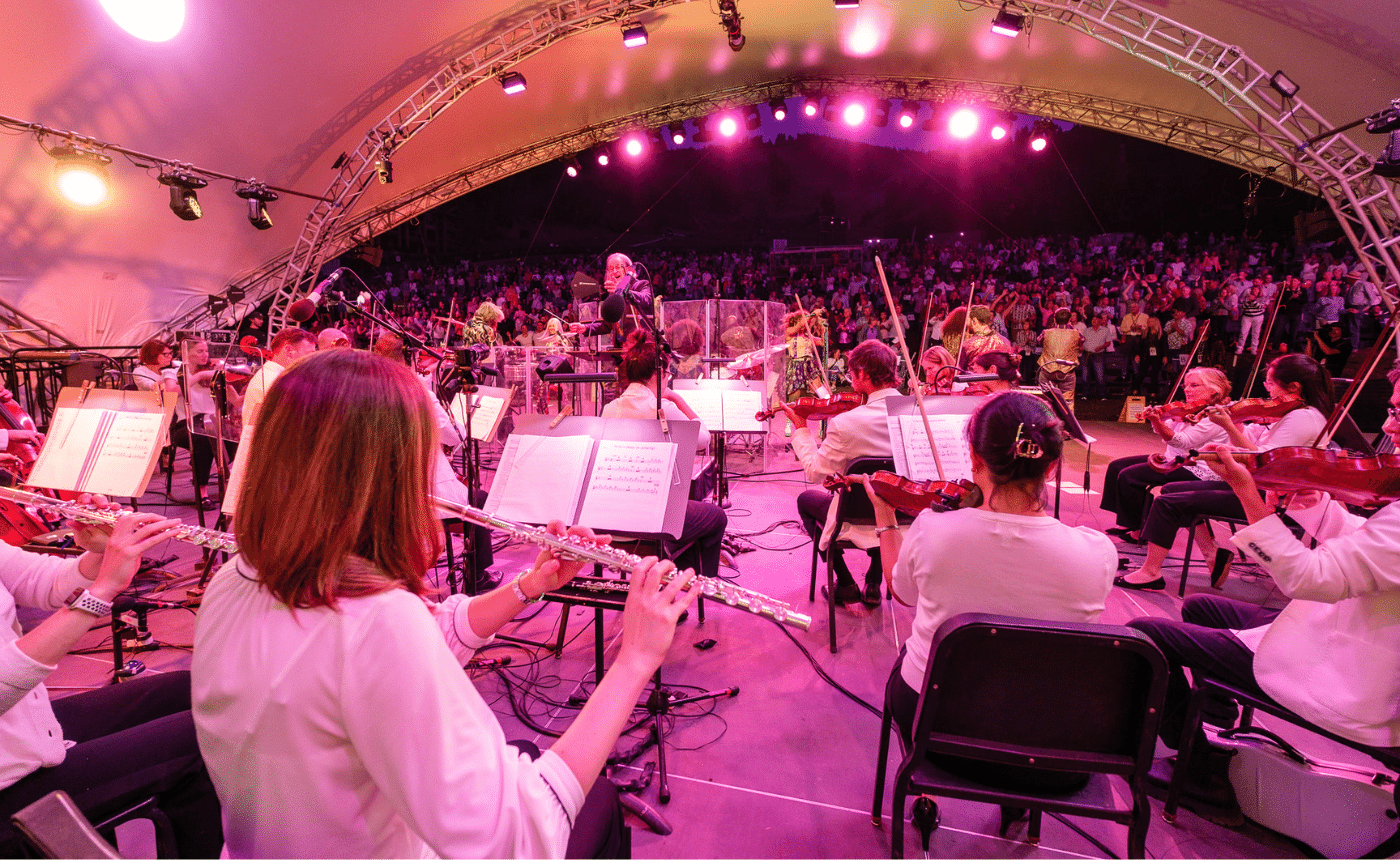Andrew Norman – Switch
Andrew Norman (b. 1979): Switch
Commissioned by the Utah Symphony, BBC Radio 3, and the Serge Koussevitzky Music Foundation.
For the Serge Koussevitzky Music Foundation in the Library of Congress and dedicated to the memory of Serge and Natalie Koussevitzksy.
Additional support provided by the National Endowment for the Arts, Sounds of Science Commissioning Club, and the Victor Herbert Foundation.
Instrumentation: 3 flutes, 3 oboes, 3 clarinets, 3 bassoons; 4 horns, 3 trumpets, 3 trombones, tuba; timpani, harpsichord, keyboard; strings
Performance time: 20 minutes
Background
It comes as no surprise that the young American composer Andrew Norman is based in Los Angeles. His music captures the dynamism of that multimedia entertainment capital, including the videogame genre, for which he has composed extensively. But this modern outlook is balanced by historical interests, including a fascination with musical notation that extends back to that art’s medieval roots. A highly collaborative composer, he enjoys working with performers to explore the act of interpreting notation; as his website notes, “he is fascinated by the translation of written symbols into physical gesture and sound.”
Norman is increasingly interested in storytelling in music, and specifically in the ways non-linear, narrative-scrambling techniques from cinema, television, and video games might intersect with traditional symphonic forms. His distinctive, often fragmented and highly energetic voice has been cited in the New York Times for its “daring juxtapositions and dazzling colors,” in the Boston Globe for its “staggering imagination,” and in the L.A. Times for its “Chaplinesque” wit.
As with many successful composers, Norman’s musical talent showed itself early in life, and by the time he was in high school he was composing imaginative soundtracks for video entertainments. But early success as a professional composer, which exposed him to a wide range of contemporary music, led him to fundamental questions about the relevance of his work. After nearly interrupting his musical activities to pursue a lifelong interest in architecture, he returned to composing with renewed energy and a wider outlook.
Norman’s symphonic works have been performed by leading ensembles worldwide, including the Los Angeles, New York, and Royal Liverpool Philharmonics, the Philadelphia and Minnesota Orchestras, the BBC, Saint Louis, and Melbourne Symphonies, the Orpheus Chamber Orchestra, the Tonhalle Orchester Zurich, the Orchestre National de France, and many others. Andrew’s music has been championed by some of the classical music’s eminent conductors, including John Adams, Marin Alsop, Gustavo Dudamel, Simon Rattle, and David Robertson.
Norman was the recipient of the 2004 Jacob Druckman Prize, the 2005 ASCAP Nissim and Leo Kaplan Prizes, the 2006 Rome Prize and the 2009 Berlin Prize. He joined the roster of Young Concert Artists as Composer in Residence in 2008, and held the title “Komponist für Heidelberg” for the 2010-2011 season. He served for two years as Composer in Residence with the Boston Modern Orchestra Project, and is currently Composer in Residence with the Los Angeles Chamber Orchestra and Opera Philadelphia. His 30-minute string trio The Companion Guide to Rome was named a finalist for the 2012 Pulitzer Prize in Music.
What to Listen For
Arts writers have borrowed the word “synesthesia” from neurology denote a functional “crossing” of the senses — as with the many composers of genius through the centuries who have experienced seeing musical notes as colors. In a looser sense, paintings or photographs are said to be “rhythmic” or “loud.” This approach comes in handy when trying to describe the sounds produced by Norman’s questing, boundary-crossing creativity. Many of his musical subjects are architectural; for example, he has evoked the visual and spatial impressions of architect Frank Gehry’s work in a way that could be compared to Virgil Thomson’s musical “portraits.” In experiencing the Norman sound, it pays to listen for effects that could be described as rhyming, angular, and texturally gleaming — words that could apply equally well to Gehry’s sculptural buildings.
Describing Switch, Norman notes: “Cast as a single movement, Switch takes off where my orchestral cycle Play left off in exploring non-linear narrative structures and videogame logic. The percussionist’s many instruments act as triggers, turning other players on and off, making them play forward and backward, and causing them to jump to entirely different musical worlds.”
From Andrew Norman… “Switch is a game of control. Each percussion instrument (both in front of and behind the orchestra) is a switch that controls other instruments in specific ways, making them play louder or softer, higher or lower, freezing them in place and setting them in motion again. The soloist, dropped into this complex contraction of causes and effects like the unwitting protagonist of a video game, must figure out the rules of this universe on the fly, all while trying to avoid the rewind-inducing missteps that prevent their progress from one side of the stage to the other.
Instead of being broken in to traditional movements, Switch exists as a system of different “channels,” each with its own unique sound world , that are flipped between by the playful (and devious) snaps of the channel-surfing slapsticks at the back of the stage.”












